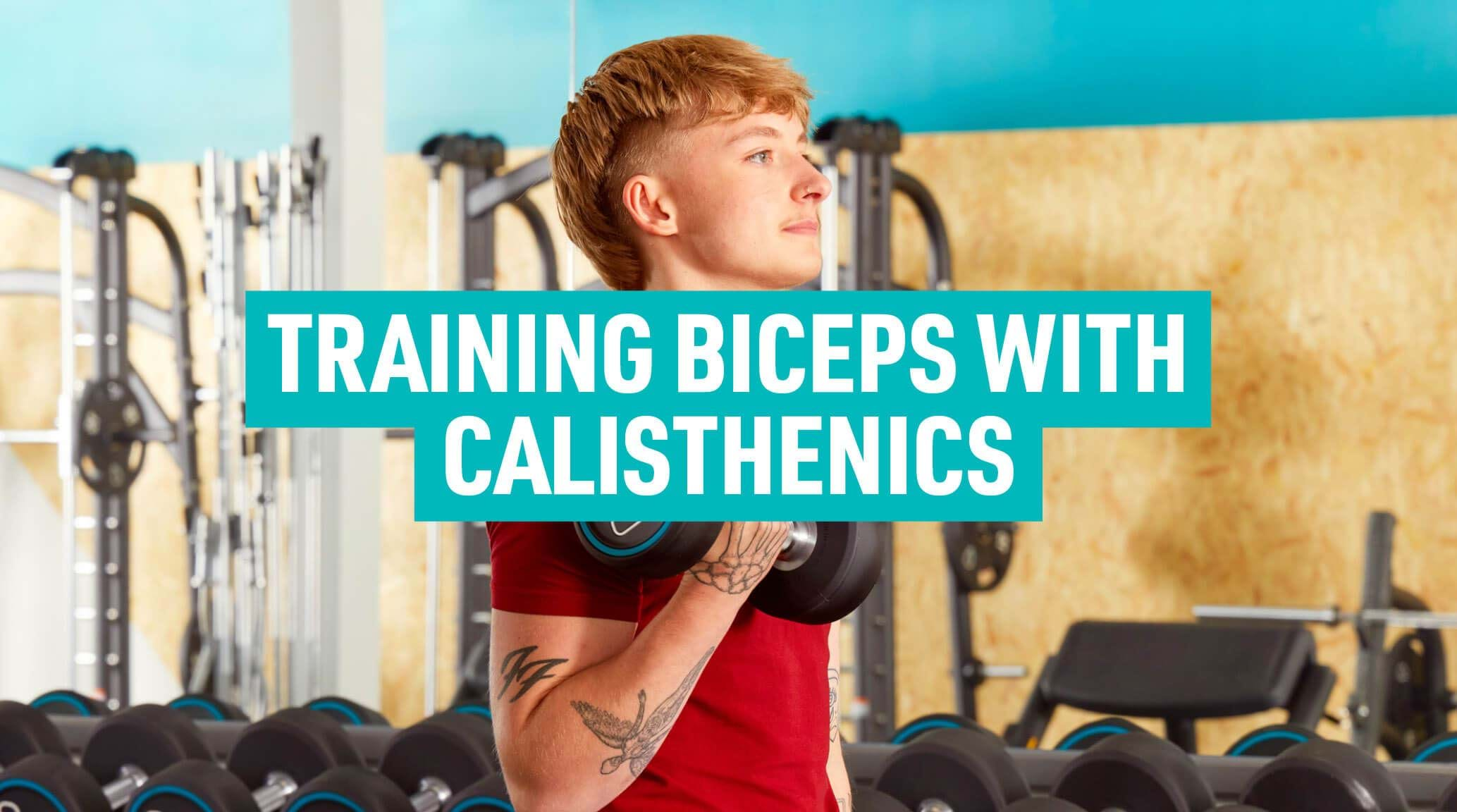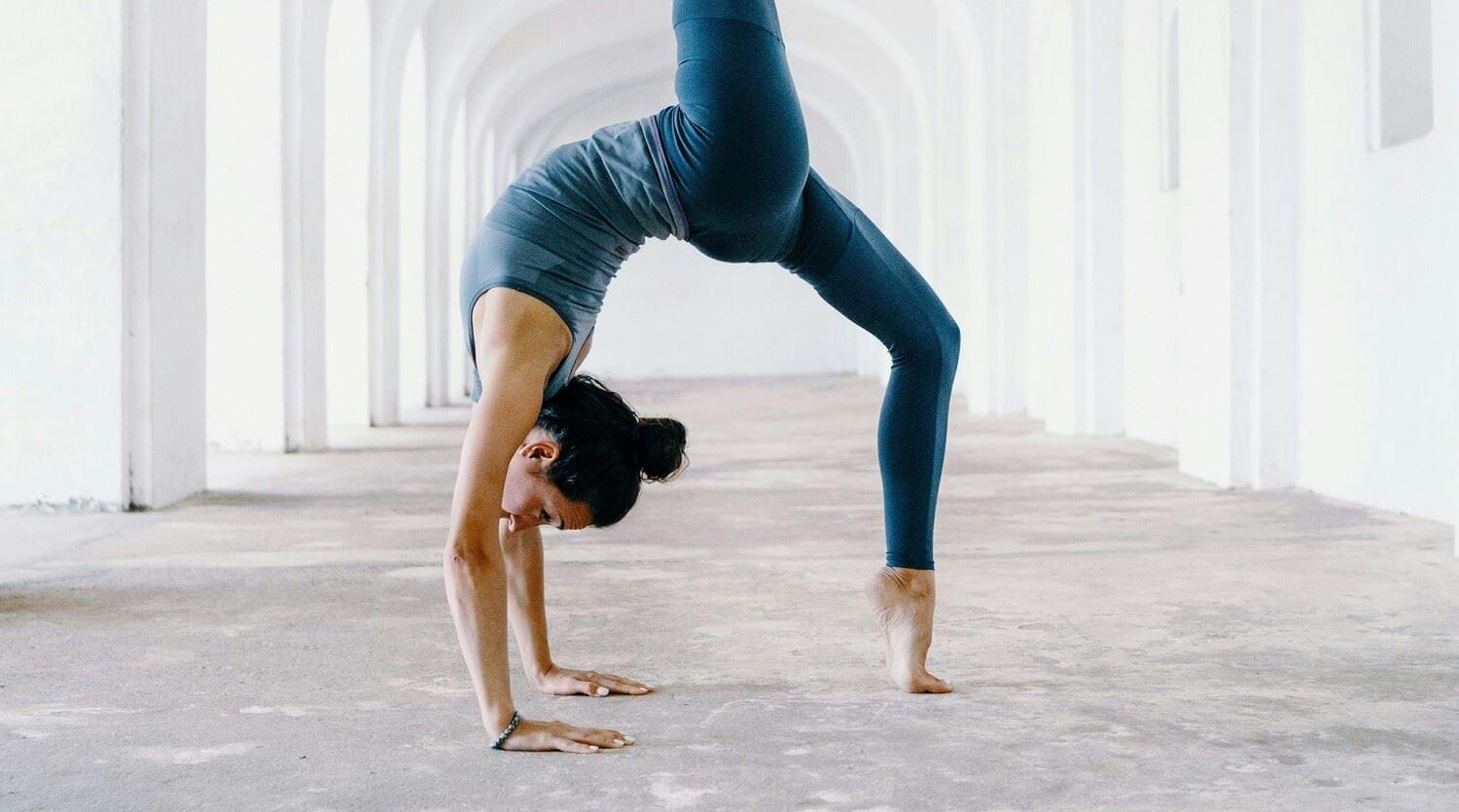Training Biceps Through Calisthenics

Can Calisthenics Build Biceps | Benefits | Calisthenics Bicep Exercises | Bicep Calisthenics Workout
Calisthenics is a type of strength training that uses bodyweight and gravity to provide resistance, rather than tools like free weights and resistance bands.
Calisthenics workouts typically focus on full body exercises that improve strength and mobility, and are not well known for their ability to isolate smaller muscles like the biceps. However, that doesn't mean you can't train your biceps with calisthenics.
In this blog, we look at the best calisthenics biceps exercises and how to combine these into a calisthenics bicep workout.
Can Calisthenics Build Biceps?
There is a common misconception that the only way to increase the size of your biceps is through bodybuilding, however calisthenics exercises for biceps can help to build both strength and size of the biceps. It is harder to isolate the biceps as there aren’t any calisthenics bicep exercises specifically, but
Benefits Of Training Biceps Through Calisthenics
The main benefit of using calisthenics to train your biceps is that bicep calisthenics exercises are compound, upper body exercises that work multiple muscles, not just the biceps. This improves overall upper body and pulling strength as well as coordination and stability and ensures that other muscles in the arms, shoulders, and back aren’t neglected.
Another benefit of calisthenics exercises is that you can do the exercises anywhere, with little to no equipment. Not having to go to a gym or invest in expensive equipment makes working out more accessible.
Calisthenics Exercises For Biceps
Chin ups
Chin ups are similar to pull ups but the underhand grip places more emphasis on the biceps, making it a great calisthenics exercise for this muscle group.
Start by standing in front of a pull up bar and place hands shoulder width apart with an underhand grip (palms facing towards you).
Allow your body to hang with legs fully extended, or crossed behind you if there isn't enough space.
Brace your core and pull your shoulder blades back and down.
Keeping your elbows close to your body, pull your chest towards the bar.
Once your chin is above the bar, begin to slowly lower back down by extending your arms.
Repeat for desired reps.
Inverted rows with underhand grip
Inverted rows with an underhand grip is essentially the bodyweight version of a bicep curl. This is a great alternative if you are unable to do chin ups, but can also be used in addition to chin ups as it works different muscles in the back.
Set up a bar at around waist height, or use the edge of a sturdy table. The lower the height, the harder this exercise is.
Lie so your chest is under the bar and place both hands around shoulder width apart with an underhand grip.
Keeping your arms extended, lift your hips off the floor and torso off the floor so that only your heels are on the ground, with your body in a straight line.
Brace your core and pull your elbows back to pull your chest towards the bar.
Once your chest reaches the bar, slowly lower your body back down by extending the arms.
Isometric pull ups
Isometric pull ups involve holding the pull up position with the arms bent and chest close to the bar, which is when the biceps are working at their hardest. This is a great exercise to build bicep strength and endurance.
Hold the bar with an overhand or underhand grip, hands wider than shoulder-width apart.
Brace your core and perform a pull-up until your chin is above the bar.
Hold this position as long as you are able to or for your desired time.
As you hold, focus on pulling the back muscles and biceps to keep in the position.
Slowly lower back down, making sure to control the descent.
Reverse grip push up
Reverse grip push ups are a variation of the push up where the fingers point towards your feet, rather than forwards, engaging the biceps more than traditional push ups. If this is too difficult, you can modify this by starting on your knees.
Start on all fours, your hands on the floor with palms facing forward (fingers pointing toward your feet), shoulder-width apart.
Step your feet back so that your body makes a straight line from head to heels.
Engage your core and glutes to prevent your hips from sinking.
Bend the elbows to lower your body towards the ground, stopping just before your chest touches the floor.
Pause, then push through the palms to extend the arms and bring your body back up.
Negative close grip pull ups
Close grip pull ups place more focus on the biceps than traditional pull ups, while performing negatives helps to increase the time under tension for bigger strength gains.
Place your hands on the bar shoulder width apart with an overhand grip.
Jump or step up so that your chin is above the bar, with arms bent.
Keeping your core engaged, slowly extend your arms so that you lower down. Aim to do this as slowly as possible, at least 3-5 seconds.
Biceps Calisthenics Workout
There are a few ways you can combine these calisthenics bicep exercises into a workout:
Bicep Calisthenics Circuit
Chin ups – 40 seconds
Rest – 20 seconds
Reverse grip push ups – 40 seconds
Rest – 20 seconds
Inverted rows - 40 seconds
Rest - 20 seconds
Negative pull ups – 40 seconds
Rest – 20 seconds
Isometric pull ups – 20 seconds
Rest – 40 seconds
Repeat 3-4 times.
Bicep Calisthenics Strength Workout
If you prefer more traditional strength training workouts, you can perform these exercises using reps and sets.
Chin ups – 3 x 8 reps
Reverse grip push ups – 3 x 8 reps
Inverted rows – 3 x 12 reps
Negative pull ups – 4 x 3-5 reps
Isometric pull ups – 3 x max holds
For more calisthenics workouts, check out our beginners calisthenics guide here and our intermediate calisthenics workout plan here.
Our gyms have got functional areas which are great for calisthenics workouts -- find your nearest gyms here to get started.


